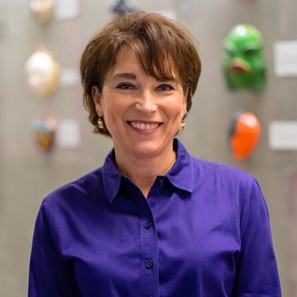Cynthia Standley, University of Arizona College of Medicine – Phoenix – Interpreting Research Through an Artist’s Eyes
 Artists and researchers could have a lot to collaborate on.
Artists and researchers could have a lot to collaborate on.
Cynthia Standley, professor in the department of bioethics and medical humanism at the University of Arizona College of Medicine – Phoenix, explores why these two groups coming together could have real benefits for society.
Cynthia A. Standley, Ph.D. is a professor in the Department of Bioethics and Medical Humanism at the University of Arizona College of Medicine – Phoenix. She received her PhD in Physiology from Wayne State University in Detroit, Michigan and has more than 25 years’ experience teaching physiology to medical and health professional students. She founded the Art in Medicine program at the UA College of Medicine-Phoenix and has partnered with the Phoenix Art Museum to provide arts education to medical students with the goal of improving patient care as well as medical student wellness. The program was a recipient of the Governor’s Art Award in 2021 and named a “Best of the Valley” for the merging of arts and sciences by Phoenix Magazine. She currently chairs the Phoenix Bioscience Core Arts Committee, a 12-member committee representing all three state institutions in Arizona. In 2021, she led the committee to start the Artist + Researcher program, the committee’s largest initiative, pairing local Phoenix artists with researchers and scientists to develop translational pieces of art that communicate groundbreaking life science research in new and innovative ways to the public.
Interpreting Research Through an Artist’s Eyes
Delivering complex information to the public is difficult. In 2021, the Phoenix Bioscience Core embarked on a mission to use an arts-based approach to translate research to the community at large. The Phoenix Biomedical core (PBC) is a partnership between the city of Phoenix, the Arizona Board of Regents, and all three major public universities in Arizona.
The PBC is the center of Arizona’s health care and life science industry, training the next generation of health care workers and developing innovative solutions for some of the toughest challenges in life science today. The goal of the Artist + Researcher Program is to see what happens when artists and scientists join forces to conceptualize a way to communicate complex research.
This approach is more impactful than reading written text. Art’s visual appeal serves as a bridge to generate interest in science; inspiring people to want to know more. The artists and researchers collaborate to help advance both disciplines: art helping science by providing visual explanations and science helping art by offering new concepts that artists can expand into new meanings and directions.
Up to 10 artists are paired with 10 researchers following a “meet and greet” speed dating event where artists and researchers rank their preference of who they would like to work with. After final pairings are announced, the teams work together for 9 months to create artworks. The public is invited to a grand opening where the teams present their work.
We’ve had various 3D works of art, video, performance, paintings, and even cloisonne jewelry exhibited. We are entering the third year of this program and are seeing success in engaging the public with this visual language that helps to make the science happening on the campus of the PBC more accessible and understandable to the community at large.


